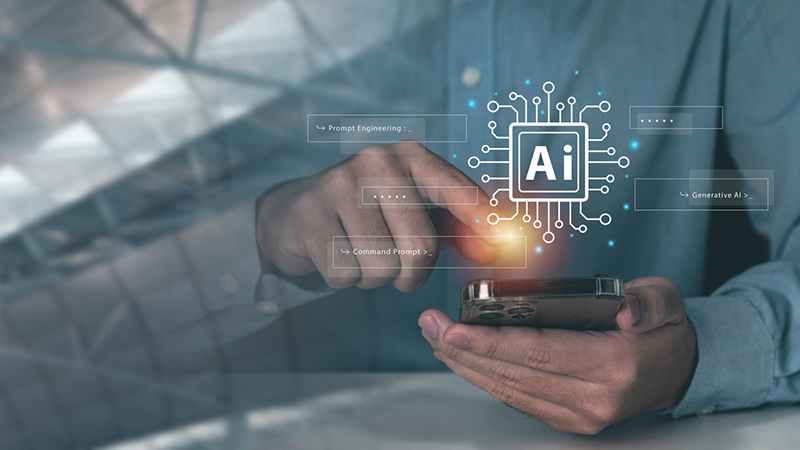Should Your Organization Be Utilizing ChatGPT?
If used appropriately, ChatGPT can be an efficient tool that can save your organization time and money—here’s how to get started.
By Sean McLean and Monica Zent | Digital Exclusive – 2023

By now you’ve heard of ChatGPT, the artificial intelligence (AI) chatbot tool that uses natural language processing to generate human-like responses. While ChatGPT isn’t technically conversational AI, it can simulate conversations in a way that’s relevant and helpful to users by interpreting user input, generating a response, and engaging in a conversation.
All of this is to say that organizations shouldn’t be fooled into thinking ChatGPT is an employee replacement. Instead, organizations should be looking at it as an efficiency-focused tool that can save time and money (if used appropriately)—here’s how.
For starters, ChatGPT can be used in business as a:
- Personal/virtual assistant to draft emails and correspondence.
- Creative brainstormer for help coming up with ideas that you can later fine tune.
- Social media content creator to generate copy for blogs or other posts.
- Copy editor for template editing or training in tone and local compliance.
- Task manager to prioritize daily tasks.
- Presenter by taking any YouTube or public video/document, converting it to script, and showcasing the top five points.
- Data analyst for help explaining raw data, generating code, or recommending visuals.
Of course, for some specific use cases and industries, like accounting, it’s a bit more nuanced. The key question becomes, how much can organizations rely on this technology and does the use of ChatGPT need to be disclosed to clients?
There’s always the potential for gaps in the information or missed nuances, so anything going through AI, like complex compliance questions, needs the trained eye of a professional who can validate ChatGPT’s outputs. While ChatGPT is certainly capable of simple tasks, it’s still far from being a human substitute.
Notably, the use cases are expanding exponentially as more features to ChatGPT become available. Recently, a few critical aspects have turned the corner, allowing most enterprises to legitimately start user adoption planning, primarily around the investment in ChatGPT Plus (not the free ChatGPT account). Additionally, data privacy is now available as an option to keep your corporate data off the training model and protect organizations from inadvertent data breaches.
The web plugins feature is also now available, which means ChatGPT Plus is now connected to the internet (many companies didn’t see the tool as a viable option until this happened). With that said, if your organization is considering starting the ChatGPT Plus journey, here are a few best practices to consider:
1. Build an AI use policy. Like all other HR policies in your organization, you’ll need to define what is and isn’t allowed from a governance, security, and control standpoint. Many business units can be polled when deploying this policy, and leadership should take multiple stakeholder viewpoints into account before approving ChatGPT use.
2. Analyze the current cost of manual work that can be recovered in your return on investment (ROI). Don’t just look at the budget expense. Start with repetitive tasks and present the cost savings realized because of the adoption of ChatGPT (e.g., the time spent on email correspondence or saving files into company systems).
3. Adjust the evaluation of work performance around utilization of ChatGPT. Many organizations that have adopted AI tools are tying compensation and advancement to proper utilization of provided technology. This results in better corporate efficiency across all team members when the promotion of use is transparent.
4. Develop a quality control/validation protocol. Quality control is necessary to prevent users from drifting away from what’s outlined in your policy and protocols after initial training.
With a tool as powerful as ChatGPT, it’s important to remember that it’s not foolproof. Sensitive data isn’t yet protected on the free account, which has led to concerns of leaks of proprietary information. With the recent announcement of new secure plugins, many authorized vendors are offering disclosures to assure end users that their data is protected. It’s important that users know how data will be used before they get involved with ChatGPT.
Ultimately, we must remember that the human element plays a huge role in the successful creation and execution of any content. When used properly, ChatGPT can be an efficient tool that saves organizations time and money. So, with these caveats in play, I think it’s time to embrace ChatGPT and explore what this exciting technology can do for your organization.
Sean McLean is the director of Technology Consulting for Petrinovich Pugh & Company LLP. Monica Zent is the CEO and founder of ZentLaw.